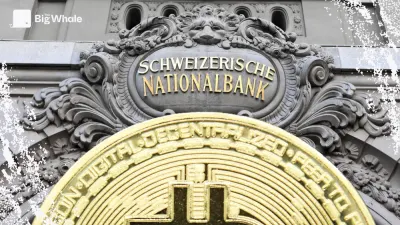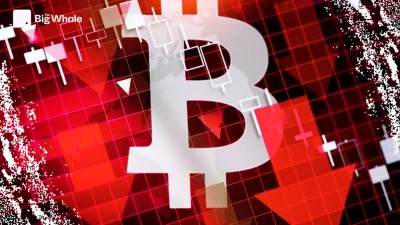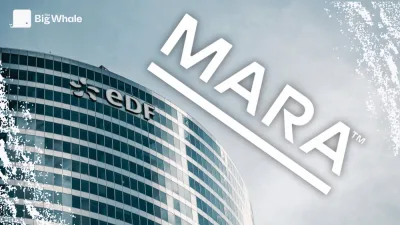TBW - Venice.AI (VVV ): The first decentralised generative AI platform

What you need to know 🤖
Venice is a decentralised AI platform focused on privacy and freedom of expression, offering an alternative to centralised services such as ChatGPT.
The platform allows users to generate text, images and code without censorship, while avoiding the storage of user queries and responses.
Since its launch in May 2024, Venice has enjoyed rapid success with more than 450,000 users, including 50,000 daily active users. The platform processes around 15,000 requests per hour.
Venice launched its VVV token at the end of January 2025. By staking this token, users can access AI capabilities on a per-query basis, opening up new opportunities for advanced users and developers.
The project also targets AI agents that could manage their financial consumption on their own.
General presentation 🧪
One of Venice's strengths is its ability to allow users to interact with the AI without creating an account (albeit with a very limited number of queries), thus ensuring anonymous access. For those who want a larger number of queries, they can take out a classic subscription.
The project presents itself as an "uncensored" AI where users can interact without restriction or risk of being banned.
Venice offers access to the main open source models - including Qwen, Llama 3 and Deepseek (a Chinese AI that has recently revolutionised the market) - which will be regularly updated. Its mission is to provide unbiased answers while preserving user confidentiality.
In addition to these classic offerings, the VVV token opens up new possibilities for users looking for a more flexible and customisable experience.
The token provides access to Venice's API without any usage fees, unlike classic pay-per-request models (e.g. ChatGPT, Claude). It guarantees:
- Unlimited access to AI based on tokens held
- No restrictions on requests (no rate limit)
- Autonomy for AI agents, who can buy VVV and manage their own consumption
Functioning ⚙
To put it simply, Venice is not a new artificial intelligence. In fact Venice acts as a secure proxy that forwards the user's request to AI models while protecting their privacy.
Unlike traditional AIs, Venice does not directly execute user requests on a centralised server. Instead, each request is encrypted and transmitted to a decentralised network of GPU (graphics card used for AI) providers. Each GPU node sees only one request and has no access to the user's overall context or other interactions.
.png)
Toute, however, some critics point out a limitation of this model: since there is no central server, it is more difficult to guarantee that the files or data sent are actually deleted after use.But that's precisely the principle behind decentralised networks such as DePIN (Decentralised Physical Infrastructure Networks) and DeVIN (Decentralised Verifiable Intelligence Networks).Venice focuses above all on confidentiality:
- No sensitive data is collected.
- No conversations are stored on a server.
Chats remain exclusively on the local storage of the user's browser, and disappear when the user changes device.Using Venice does not necessarily require VVV staker. Users can access the free and Pro offerings (via a traditional subscription) as before.An alternative to per-query charges:
- For AI agent developers and users with large requirements, VVV staking allows an unlimited number of queries to be executed based on their share put into play.
- The more staked VVVs a user has, the more inference power they have.
Funding 💰
Details about the entities or individuals who have invested in Venice are not publicly available. Venice simply states on its X (ex-Twitter) account that there have been no private sales or outside investors.
Team and community 👾
Venice was founded by Erik Voorhees, an American entrepreneur known for his pioneering role in the cryptocurrency industry. He is behind several crypto start-ups, including Coinapult and ShapeShift, and co-founded SatoshiDICE, a gambling site using Bitcoin. He was also marketing director at BitInstant, one of the first platforms facilitating the purchase of Bitcoin in the United States.
At his side, Teana Baker-Taylor holds the position of COO (Chief Operating Officer) and brings her expertise in fintech, crypto and artificial intelligence. Prior to joining Venice, she held senior positions at Circle, Crypto.com and Binance, where she played a key role in regulatory strategy and the expansion of the crypto sector. She has also led Global Digital Finance and sits on CryptoUK, an organisation that campaigns for balanced regulation of crypto-assets.
A boon for AI agents?
Venice is the first to natively integrate on-chain AI agents. Computational power is distributed according to the quantity of VVVs held.Access to Venice's AI inference resources is directly linked to the quantity of VVV tokens held. Specifically, the percentage of the total VVV supply you own corresponds to the percentage of the total inference capacity to which you have unlimited access.
For example, if the total VVV supply is 100 million tokens and you own 1 million tokens (1%), you have unlimited access to 1% of Venice's computing power. This capacity will increase over time, but your share will always remain the same, guaranteeing sustainable and scalable access to AI resources.
This model offers a key advantage: instead of paying for each use or taking out a subscription, you get unlimited access based on your participation in the network. As Venice grows, so does your access to AI resources.
.png)
Case in point: An AI agent that funds itself
- An online shop installs an intelligent chatbot that responds to customers, recommends products and manages returns.
- If the number of customers explodes during Black Friday, the agent detects that it needs more power.
- It automatically buys onchain VVV to handle all the requests without slowing down.
- Once the rush period is over, it can resell the excess VVV on a secondary market.
The VVV token 🪙
The total supply at launch was 100 million tokens, with an annual issue of 14 million VVV to remunerate stakers.50 million million of these were distributed via an airdrop:
- 25 million for 100,000 active Venice users (min. 25 points since October 2024)
- 25 million to AI community projects on Base (e.g. Virtuals, AERO, DEGEN, AIXBT...). These tokens had to be held on a DeFi wallet, at the time of the snapshot which took place on 31 December 2024.
The tokens must be claimed before 13 March 2025 via the official website. After this deadline, they could be burnt or reallocated.
.png)
The VVV has significant inflation, especially in the first year. To offset this issue, strong demand will be required, which implies that Venice's model will need to be widely adopted and appreciated.The launch of the token drew fierce criticism on Twitter, particularly after it was discovered that two members of the Aerodrome team had carried out transactions between the creation of the cash pool and Venice's official announcement. An act deemed unethical, which led to their identification and dismissal by Aerodrome, according to Erik Voorhees.
But that's not all. On 1 February 2025, @AmirOrmu highlighted controversial transactions involving the Venice team. According to its on-chain analysis, more than $10.2 million in VVV tokens were allegedly sold by wallets associated with the team, raising accusations of advance selling to the detriment of the community. Erik Voorhees defended the practice, saying it was in line with the rules set out in the Venice blog, which detail the terms of the token.
However, attention has also been focused on Wintermute, the well-known market maker, as well as Kbit (another market maker). Both companies are said to have received a portion of the tokens and to have carried out massive sales, amplifying the controversy. This time, nothing in the whitepaper mentioned these distributions, and Erik Voorhees remained silent on the subject.This situation rekindles recurring criticism of the practices of market makers in the crypto ecosystem, particularly their privileged access to token allocations before the general public.These revelations raise many questions about the transparency of the Venice project.
Risks 😨
Security: The smart contracts used to manage the VVV token could be vulnerable to attacks, as has been the case with other DeFi projects
Limited adoption & Market volatility: If the VVV token is not widely adopted, its value may fall, particularly due to significant inflation (14% in the first year). If demand for Venice's services does not grow sufficiently, the value of the token and the attractiveness of staking could weaken. In the event of a sharp drop in the market, users who have staked their tokens could see their investment lose value.
Risk of hidden centralisation:Although Venice is banking on a decentralised network of GPU providers, a concentration of these resources among a few dominant players could reduce the resilience and confidentiality of the system. This could run counter to the goal of total decentralisation.
Where to buy the VVV token? 🛒
The VVV token is available on some of the centralised exchanges such as Coinbase, or Kucoin, etc. It can also be exchanged decentrally on Base via DEXs such as Uniswap or Aerodrome.
Competition ⚔️
The market for AI platforms, whether Web2 or Web3, is ultra-competitive and constantly evolving. New players emerge regularly, forcing users to compare features, privacy and benefits before making a choice.However, Venice stands out radically for :
- A decentralised approach, offering an alternative to traditional centralised models
- An innovative token mechanism, giving access to AI without user fees or restrictions
- Strategic support from Layer 2 Base, enabling scalability and rapid adoption
- High visibility thanks to its rapid listing on Coinbase, a rare advantage for a Web3 startup
In contrast to traditional offerings such as ChatGPT in its free version, Venice targets a more sophisticated audience, already sensitive to online privacy issues.With its new VVV package, Venice is particularly aimed at:
- AI agents operating in the Web3 ecosystem, requiring a decentralised infrastructure.
- To users familiar with Web3, concerned about their privacy and looking for an alternative to centralised solutions.
This approach positions Venice as an answer to the limitations of traditional AI, while strengthening the Web3 ecosystem.
The Big Whale's view 🐳
As AI agents multiply, VVV's value depends on two key factors: Venice's ability to grow its compute network and its guarantee of privacy for users.
The major challenge is to attract enough users and developers to consolidate the ecosystem in the face of centralised giants.
On the technical front, the evolution of chips towards greater power and lower costs should naturally increase Venice's inference capacity. This technological advantage could thus protect the VVV from deflationary effects.
The question remains open: will this merger between AI and Web3 transform the AI agent landscape for good, or is it just a temporary success driven by airdrop and the Coinbase listing? Either way, Venice's evolution deserves close attention.



